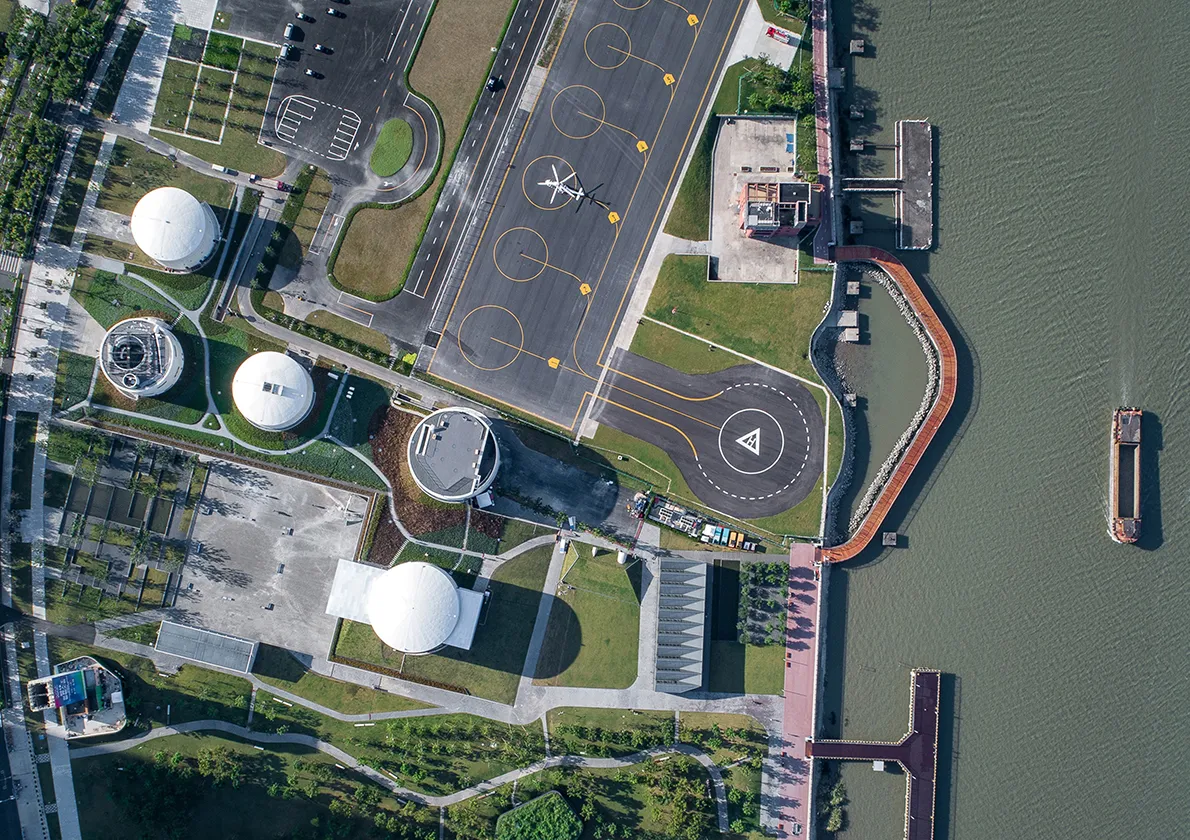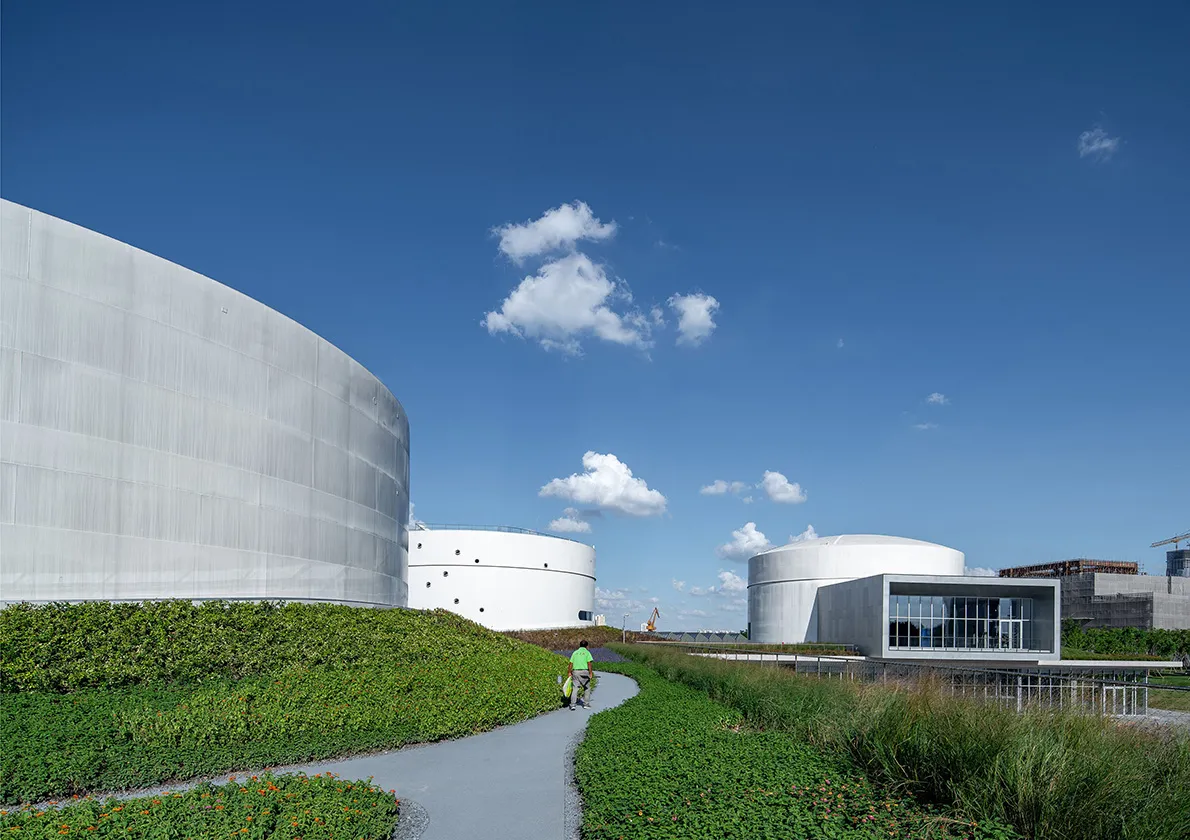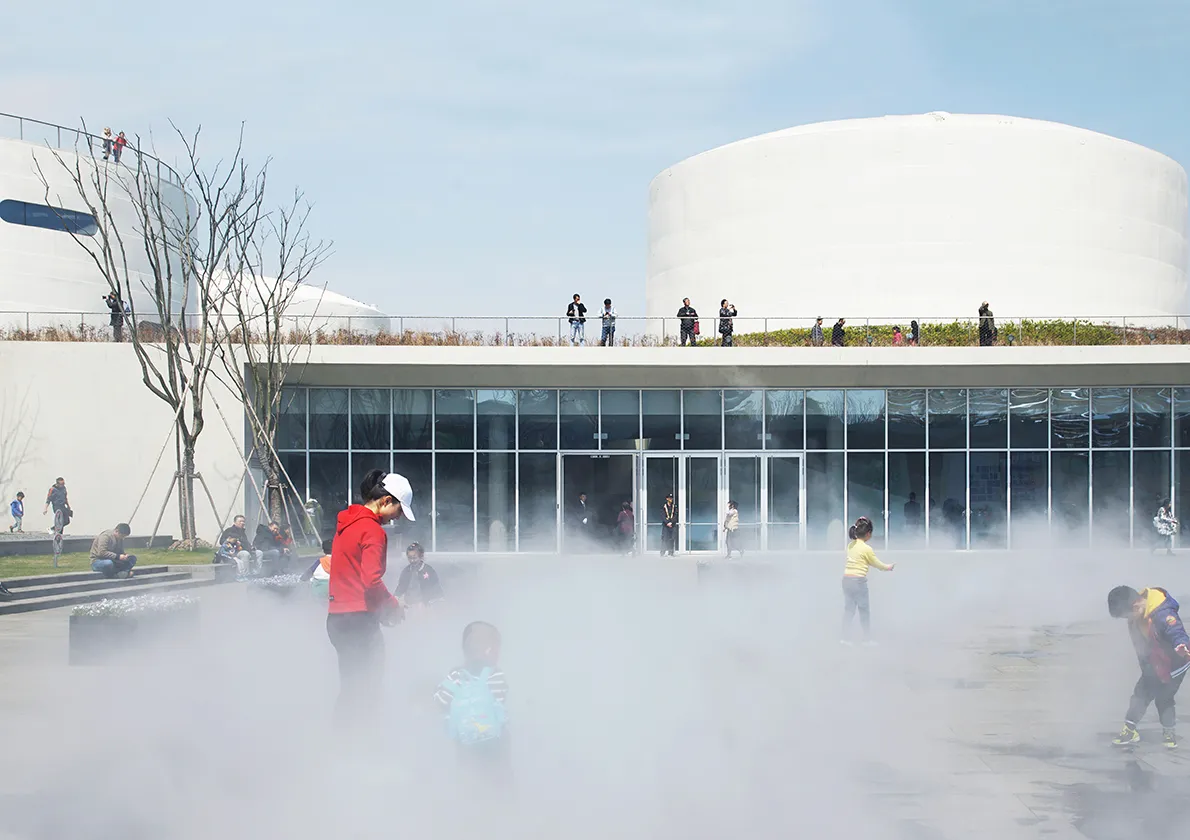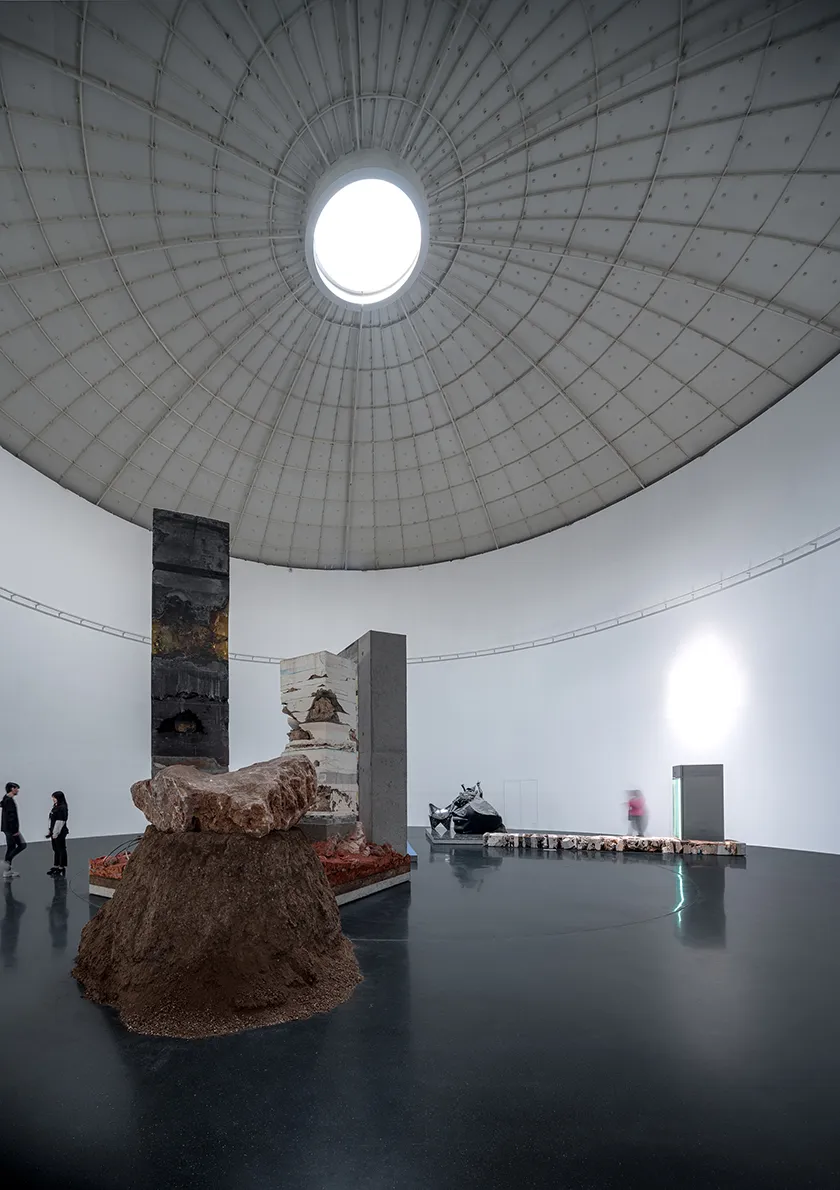



【獎項 Prizes】 評審團推薦獎 Judges’ Special Award
【國家或地區 Country/Region】 中國大陸China
【公司/團隊 Company/Group】 OPEN Architecture
【設計師姓名 Designer】
【作品介紹 Description】
坐落于上海黄浦江西岸,五个废弃的航油罐及其周边场地,被改造为一个新型的当代艺术中心。 昔日的油罐变身为艺术的载体,在尊重工业遗存的同时,连接起城市、艺术与自然,以开放、谦逊、包容的姿态融入城市生活中。 设计的核心是连接五个油罐的Z字型“超级地面“,之上是开阔的公共艺术公园,之下是灵活开敞的室内展览及服务空间。两个开阔的广场和一片都市森林将植被、水景、小展厅等联系起来,其间散布公共艺术作品,邀请人们在自然与艺术之间自由穿梭。 每个油罐的功能和改造策略都极为不同,分别为音乐表演空间、餐厅和三个各具特色的展览空间。油罐原有的结构给设计和施工带来极大挑战,OPEN 在置入丰富功能同时最大限度保留了油罐原始的美感。
Located on the banks of the Huangpu River in Shanghai's West Bund, Tank Shanghai converts five abandoned aviation fuel tanks and their surroundings into a new type of contemporary art and cultural center, seamlessly combining art, nature and urban life. Integrated into the urban landscape with an unprecedented attitude of openness, accessibility and humility, Tank Shanghai transforms containers of fuel into containers of culture while paying tribute to the site's industrial past. Central to both the project's architectural and landscape design is a Z-shaped 'Super-surface'—a new 'ground' above which are undulating parklands that weave in between the tanks, and below which are free-flowing indoor public spaces that connect the tanks to one another from beneath while providing back-of-house services. Merged with the Super-surface, two open plazas and an Urban Forest weave greenery, a pond and stepped waterscape, detached smaller galleries, and public artworks together across the site. This rich natural and cultural landscape allows people to move freely between Nature and Art. The programs and design strategies underlying the transformation of the five tanks vary widely. One tank is now a space for live music performances, another a restaurant, and the last three distinctive art and cultural exhibition spaces. These transformations had to overcome significant design and construction challenges posed by the constraints of working with the existing structure of each tank.



